
With the rapid evolution of technology, the demand for skilled developers and engineers continues to grow. As we move into 2025, the landscape of programming is more diverse and dynamic than ever before. Whether you’re a seasoned professional looking to expand your skill set or a beginner just starting out, choosing the right programming language is crucial. This comprehensive guide will help you navigate the top programming languages to learn in 2025, equipping you with the knowledge to make informed decisions and stay ahead in the competitive tech industry.
As the tech industry continues to evolve, the languages that power our applications and systems also evolve. New languages emerge, and existing ones gain new features or even decline in popularity. The year 2025 brings with it an exciting array of programming languages, each with its own strengths, use cases, and communities. Understanding which languages to focus on can significantly impact your career or your ability to bring your projects to life. This blog explores the top programming languages to learn in 2025 based on current trends, job market demand, and the versatility of the languages. We’ll also delve into some emerging languages that show promise in the years ahead.
Choosing the right programming language depends on several factors, including your career goals, the industry you’re in, and the types of projects you want to work on. Here are some key criteria to consider:
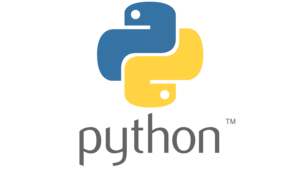
Overview: Python continues to dominate the programming landscape due to its simplicity, readability, and extensive library support. It’s an ideal language for beginners but is also powerful enough for advanced use cases in data science, machine learning, web development, and automation.
Use Cases:
Why Learn Python in 2025?
Python’s versatility and widespread adoption make it a must-learn language. The rise of AI and data science continues to drive demand for Python developers. Moreover, Python’s active community and rich ecosystem mean you’ll always find libraries and frameworks to support your projects.

Overview: JavaScript remains the backbone of web development, powering the interactive elements of websites. In 2025, it’s more critical than ever for front-end and full-stack developers, especially with the continued growth of frameworks like React, Angular, and Vue.js.
Use Cases:
Why Learn JavaScript in 2025?
As web applications become more complex, JavaScript’s role in creating dynamic, responsive user experiences grows. With its wide adoption and the continued expansion of web technologies, JavaScript remains a top language to learn.
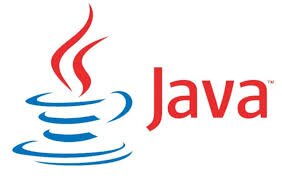
Overview: Java has been a cornerstone of the programming world for decades, particularly in large-scale enterprise environments. Its robustness, portability, and extensive use in Android development keep it relevant.
Use Cases:
Why Learn Java in 2025?
Java’s performance and scalability make it indispensable in large-scale enterprise solutions. The language continues to evolve, with new features enhancing its efficiency and appeal, ensuring its place in the industry.

Overview: TypeScript has gained significant traction as a statically typed superset of JavaScript, offering developers better tooling, fewer bugs, and a more robust codebase. It’s increasingly becoming the go-to language for large-scale JavaScript applications.
Use Cases:
Why Learn TypeScript in 2025?
TypeScript’s ability to prevent errors before runtime, combined with its compatibility with existing JavaScript libraries, makes it a smart choice for developers aiming to build scalable and maintainable applications.

Overview: Rust is celebrated for its memory safety without sacrificing performance, making it ideal for system-level programming. It’s increasingly used in web assembly, embedded systems, and even blockchain development.
Use Cases:
Why Learn Rust in 2025?
Rust’s focus on safety and performance is leading to its adoption in critical areas like operating systems and game engines. As systems programming demands more secure and efficient code, Rust’s popularity is set to grow.

Overview: Go, developed by Google, is known for its simplicity, performance, and concurrency support. It’s widely used in cloud computing, distributed systems, and microservices.
Use Cases:
Why Learn Go in 2025?
Go’s efficiency and ease of use make it a preferred language for modern, scalable systems. As cloud computing and distributed architectures continue to expand, Go’s role in these ecosystems will only increase.
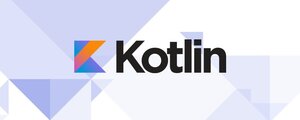
Overview: Kotlin has become the preferred language for Android app development, surpassing Java in many aspects. Its concise syntax, interoperability with Java, and enhanced safety features make it a strong contender in mobile development.
Use Cases:
Why Learn Kotlin in 2025?
Google’s endorsement of Kotlin as the primary language for Android development ensures its continued relevance. Its modern features and growing community support make it a valuable skill for mobile developers.
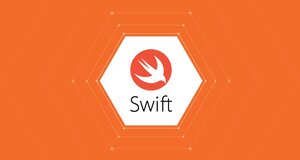
Overview: Swift is Apple’s official programming language for iOS and macOS development. It’s designed to be fast, safe, and expressive, making it easier for developers to build apps for Apple’s ecosystem.
Use Cases:
Why Learn Swift in 2025?
With the ever-growing demand for iOS applications, Swift remains a critical language for mobile developers. Its modern syntax and safety features make it an enjoyable language to learn and work with.
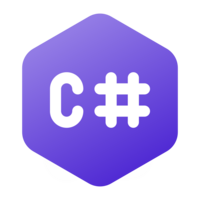
Overview: C# is a versatile language developed by Microsoft, widely used in enterprise environments, game development, and more recently, in mobile app development with Xamarin.
Use Cases:
Why Learn C# in 2025?
C#’s versatility and powerful toolset make it an excellent choice for developers looking to work across various platforms, from web to mobile to games. Its integration with Microsoft’s ecosystem also ensures long-term viability.

Overview: SQL remains the standard language for database management, essential for anyone working with data. Its importance continues to grow as businesses rely more on data-driven decision-making.
Use Cases:
Why Learn SQL in 2025?
SQL’s role in managing and querying data is critical in today’s data-centric world. Whether you’re a developer, data scientist, or business analyst, SQL is a fundamental skill that complements any other programming language you learn.

Overview: C++ is a powerful language known for its performance and control over system resources. It’s widely used in areas where high performance is crucial, such as game development, high-frequency trading, and real-time systems.
Use Cases:
Why Learn C++ in 2025?
Despite its complexity, C++ remains a vital language for developing high-performance applications. Its ongoing use in critical systems and industries makes it a valuable language for developers seeking to specialize in these areas.

Overview: Dart, developed by Google, is the language behind Flutter, a popular framework for building natively compiled applications for mobile, web, and desktop from a single codebase.
Use Cases:
Why Learn Dart in 2025?
As Flutter continues to grow in popularity, Dart’s relevance increases. For developers interested in cross-platform development, Dart offers a powerful and flexible solution.
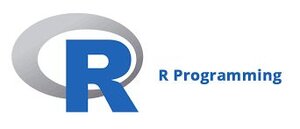
Overview: R is a language specifically designed for statistical computing and graphics. It’s widely used in data analysis, data visualization, and data mining, particularly in academic and research settings.
Use Cases:
Why Learn R in 2025?
R’s specialization in data science makes it an indispensable tool for statisticians and data analysts. Its powerful packages and visualizations capabilities make it a go-to language for professionals in the field of data science.
While the languages mentioned above dominate the programming landscape, several emerging languages are worth watching in 2025. These languages address specific needs and bring fresh perspectives to programming challenges.
Overview: Julia is designed for high-performance numerical and scientific computing. It combines the ease of Python with the speed of C, making it an attractive choice for researchers and engineers.
Use Cases:
Why Keep an Eye on Julia?
Julia’s ability to handle complex mathematical computations quickly makes it ideal for scientific research. As more institutions and researchers adopt Julia, its ecosystem will continue to grow.
Overview: Elm is a functional programming language focused on front-end development. It compiles to JavaScript and offers a robust system that eliminates runtime errors, making it an attractive choice for building reliable web applications.
Use Cases:
Why Keep an Eye on Elm?
Elm’s focus on simplicity and reliability makes it a great choice for developers who prioritize clean, error-free code. While still niche, its growing community and the demand for safer front-end solutions could lead to increased adoption.
Overview: Zig is a systems programming language that prioritizes safety, performance, and simplicity. It’s seen as a potential successor to C and C++ in some areas, with a focus on providing more control and fewer footguns.
Use Cases:
Why Keep an Eye on Zig?
As developers seek alternatives to C and C++ that offer more safety features without sacrificing performance, Zig’s appeal could grow. It’s a language that combines modern features with the power needed for low-level programming.
The programming landscape is ever-changing, with languages evolving, gaining or losing popularity, and new ones emerging. In 2025, the
Top programming languages to learn will be those that offer a combination of versatility, performance, and relevance to the current tech trends.
Whether you’re a beginner starting your coding journey or an experienced developer looking to expand your skills, understanding the strengths and applications of these languages will help you stay competitive in the job market. Python and JavaScript remain foundational, while languages like Rust, Go, and Kotlin are gaining momentum in specialized areas. Meanwhile, emerging languages like Julia and Zig offer exciting possibilities for the future. By focusing on these programming languages in 2025, you’ll be well-equipped to tackle a wide range of projects and challenges in the fast-paced world of technology. Stay curious, keep learning, and embrace the opportunities that come with mastering new languages.